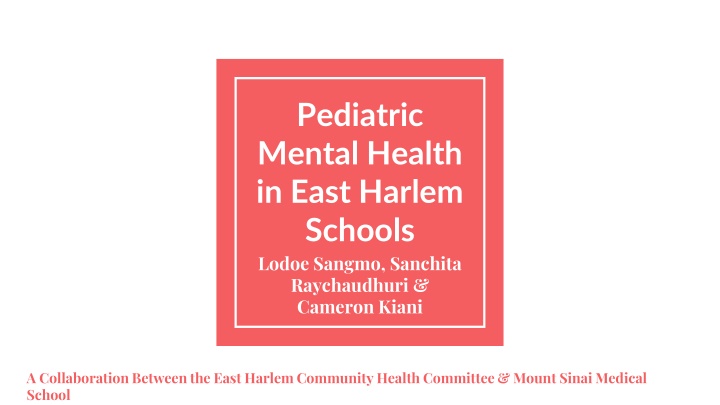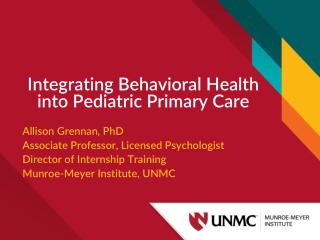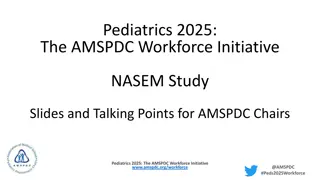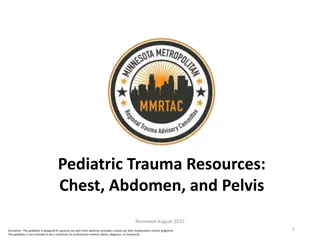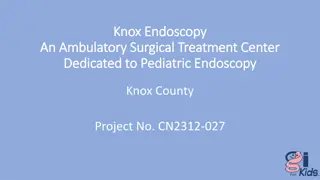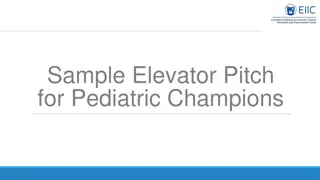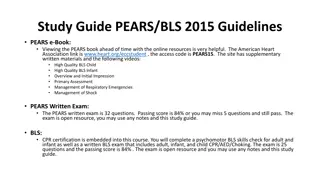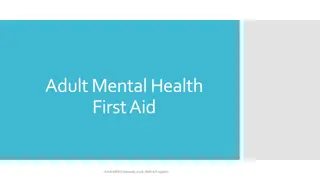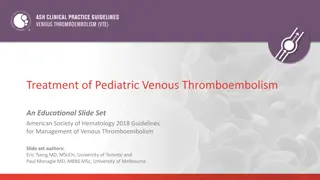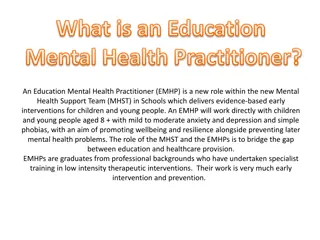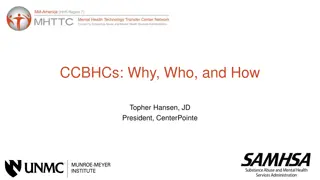Pediatric Mental Health in East Harlem Schools: A Collaborative Study
Toxic stress during childhood can have disruptive effects on physiological development and mental health. This study aims to examine mental health services in East Harlem schools and identify ways to better meet students' mental health needs through interviews with administrators and providers.
Download Presentation

Please find below an Image/Link to download the presentation.
The content on the website is provided AS IS for your information and personal use only. It may not be sold, licensed, or shared on other websites without obtaining consent from the author.If you encounter any issues during the download, it is possible that the publisher has removed the file from their server.
You are allowed to download the files provided on this website for personal or commercial use, subject to the condition that they are used lawfully. All files are the property of their respective owners.
The content on the website is provided AS IS for your information and personal use only. It may not be sold, licensed, or shared on other websites without obtaining consent from the author.
E N D
Presentation Transcript
Pediatric Mental Health in East Harlem Schools Lodoe Sangmo, Sanchita Raychaudhuri & Cameron Kiani A Collaboration Between the East Harlem Community Health Committee & Mount Sinai Medical School
Background Exposure to toxic stress during childhood disruptive effects on physiological development and mental health (Shonkoff, Farner, Siegel et al. 2012) Many youth with mental health problems are referred to juvenile justice if they display of aggressive or disruptive behaviors (Cuffe, 1995)
Objectives To examine mental health services in East Harlem schools by interviewing administrators and mental health providers within schools To identify ways to help schools better meet students mental health needs
Methods From 2014-2015, school administrators, social workers, school psychologists and guidance counselors from East Harlem schools were interviewed from a standardized list of topics We employed a mixed methods approach, including semi-structured interviews and surveys Key outcomes included breadth of mental health services provided, provider to student ratio, perception of unmet need, efficacy of referral networks, and barriers to care.
Methods: Categories of Questions Asked Category of school (SBHC, SBMHC, etc.) Staffing Type of provider Division of responsibility Funding Services provided Screening, Therapy, Referrals Referrals Places referred to Issues with referral process Relationship with administration / teachers Challenges to care Suggestions by respondent
Schools Surveyed N = 25
Suggestions from Respondents Percent of Schools
Suggestions: Training for school staff Percent of Schools
Suggestions: Information Sharing Percent of Schools
Suggestions: Streamlined Referral Process Percent of Schools
Suggestions: Parent Education Percent of Schools
Suggestions: Flexibility Percent of Schools
Summary Schools with SBHCs or SBMHCs have twice as many mental health providers per student compared to schools without them The most common challenge to care was insufficient staff Referral issues stemmed from long wait times & parental involvement Respondees frequently suggested more MH training for teachers & administrators and information sharing
Future Directions - Sharing our work and the work of previous HRSJ dyads with city-wide initiatives such as Thrive NYC Further data collection to understand how the uneven playing field of mental health resources in East Harlem schools works on the ground Volunteer with the Mobile Response team - -
Acknowledgments - Contributors: Reuben Hendler, Maryam Zafer, Scott Jelinek, Jeremy Levenson, Emmett Kistler, Kamini Doobay, Chloe Cicciariello Supervisors: Ray Cornbill, Ann-Gel Palermo Community Partner: East Harlem Community Health Committee - -
Citations - Cuffe SP, Waller JL, Cuccaro ML, et al. Race and gender differences in the treatment of psychiatric disorders in young adolescents. Journal of the American Academy of Child & Adolescent Psychiatry. 1995;34(11):1536 1543. Flores G. Devising, implementing, and evaluating interventions to eliminate health care disparities in minority children. Pediatrics. 2009;124(Supplement):S214. Institute of Medicine. Focusing on Children's Health: Community Approaches to Addressing Health Disparities. Washington, DC: National Academy Press; 2009. NYC Health. Community Health Profiles 2015. Manhattan Community District 11: East Harlem. https://www1.nyc.gov/assets/doh/downloads/pdf/data/2015chp-mn11.pdf Shonkoff JP, Garner AS, Siegel BS, et al. 2012. The lifelong effects of early childhood adversity and toxic stress. Pediatrics 129(1):e232-e246. Pumariega AJ. Treating Child and Adolescent Depression.Philadelphia, PA: Lippincott Williams & Wilkins; 2009. Disparities Among Age Groups; p. 117. - - - - -
